Read other articles by Dan Priseman at bitters&twisted
If you’re a regular follower of b&t you’ll no doubt have noticed I have a fondness for American Whiskey.
I’ve written about visiting Kentucky, various Bourbons, Tennessee Whiskey and the like on many occasions, and in fact our drinks room boasts around 80 American Whiskies, from new made corn, through to prohibition bottles of ‘medicinal whiskey’. Somehow though, I’ve managed not to write about Rye, even though it’s an old favourite of mine… I think it’s time to set that situation right.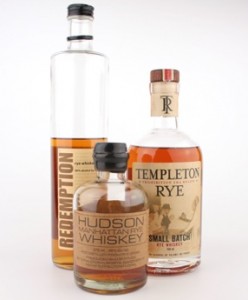
You see the ‘rediscovery’ of Rye Whiskey, and its growing popularity with bartenders is having a huge effect on the drinks industry as a whole at the moment. Somewhere between bartenders searching out and rediscovering classic cocktails, and American micro-distilleries opening up left right and centre, the face of American Whiskey is changing.
Until just a few years ago there were only a handful of distillers producing and marketing Whiskey in the States, and a few more that were bulk producing whiskey to ship mainly to Canada for blending in their domestic blends. Now however it seems like every month sees the launch of a new ‘small batch’ or ‘artisanal’ Whiskey to the market in the US. After many years without a hint of change, there’s new life being breathed into this category.
Of course this raises many questions; which new brands will have a lasting impact? What is the quality of these new to market products? And how many producers can the market sustain? It’s certainly going to be an interesting few years, and there’s every chance we could witness the birth of a future mega-brand (well even brands like JD and Jim Beam had to start somewhere). So below you’ll find some of my thoughts about Rye, as well as reviews of a few brands that seem to be gaining a following, hell maybe I’ll even throw in a few cocktails along the way. So here’s a blog about why Rye could just be the next big thing!
What’s the fuss about Rye?
When America was fist settled, immigrants from Scotland and Ireland brought with them knowledge of distilling grains to produce whiskey, and it wasn’t long before they set about making use of the fantastic Rye grain that grew readily in the North Eastern part of what is now the United States. It makes perfect sense that once you’d produced enough flour to see you through the winter that you’d then distil the rest of your grains to give you something to warm you through on those cold colonial winter nights. It’s safe to say that Rye Whiskey was if not the first spirit to be produced in America; certainly one of the first to gain real popularity.
Before settlers moved South and West into what we now know as Kentucky and Tennessee, the true American Whiskey was Rye based. As people settled in warmer climates where rye was harder to grow, they turned to corn as a base for their spirits, but by that time Rye was firmly established as the Whiskey of choice, and it is almost certain that many of the classic cocktails that people associate with bourbon, would originally have been created with Rye Whiskey.
Rye maintained its popularity through the 1800’s and into the early 1900’s and would have been a staple ingredient found in any good bar. Part of its appeal was and still is due to its unique flavour profile, you see rye as a grain tends to add complex character to a spirit as well as making a dry and spicy whiskey. In Rye Whiskies the flavour of the grain tends to come through more strongly than in Bourbon or Tennessee Whiskies.
And then there was none
It’s only due to a series of political and social upheavals that rye diminished in popularity almost to the point of disappearing. First came Prohibition, where the manufacture and sale of alcohol in the US was illegal. Obviously almost all distilleries (except a few who were granted permission to sell medicinal whiskey) closed down, and the majority never re-opened. I suspect that many would have started up again had it not been for the Great Depression and then WWII. That series of events meant that production of American Whiskey started to decline over such a long period of time that it fell almost completely out of fashion.
As American Whiskey became less popular, and imported spirits rose in popularity, the few remaining producers of bourbon and domestic whiskies in the States started to compete on price. Striving to make their products more affordable to vie for a share in a declining market, led to lower standards of production. In fact right into the 1980’s bourbon was still declining in quality, and rye whiskey had all but disappeared.
It’s only really in the last couple of decades that the quality of American Whiskey has improved, which in turn has led to more attention falling on the category. Thanks to the work of the bourbon industry to improve standards and release ‘premium’ and ‘super premium’ products, along with demand for more choice and better Whiskies, the market has grown to the point where new (or perhaps old) innovations have space to thrive. Hence the sudden arrival of Rye back on the scene.
Fast forward to our current era of cocktail culture and you find many bartenders seeking out the origins of the classics and wanting to reproduce them using as close as possible to the original ingredients. In the past three years or so the demand for Rye Whiskey has grown exponentially and producers are struggling to keep up with demand. In fact in almost every country I’ve visited this year I’ve heard bartenders complaining about the ‘Rye shortage’ as importers have been unable to meet the demands placed on them by the growing popularity of this spirit.
A case of demand and supply
Usually people talk of supply and demand, but to my mind it’s the demand that has led to a renaissance in this almost forgotten spirit. You see as the popularity of Rye Whiskey has grown so too has the demand for it, and this has led to an opportunity that hasn’t presented itself in the US for a long time. There’s now a chance for small distilleries to start production safe in the knowledge that there will be a queue of bartenders lining up to buy their product as soon as they can get it into a bottle.
Obviously this is a double-edged sword, as there are likely to be just as many poorly made products launched as good ones. In fact we’ve seen the same thing with gin over the past five years, with so many new brands emerging, but very few that really add something good to the category. Hopefully though, as more brands emerge only the best of them will grow and prosper.
This same demand has also led to the rise of ‘White Dog’ or new-make whiskey, which is a product that many believed would never have any commercial demand. Releasing a new made spirit is a way that a small distillery can generate revenue while they wait for their Whiskey to age. There’s a lot I could write about the pros and cons of this practice, and about whether or not there’s a real demand or if this is simply a fad that will pass, but perhaps that’s a subject for another time… back to Rye!
A few to try
So digging into the drinks cabinet at b&t HQ, here are three very different American Rye Whiskies that are all relatively new to the market. In fact their not very easy to lay your hands on outside of the US, but hopefully as sales increase, so will production, and sooner or later we’ll have them available in the UK too.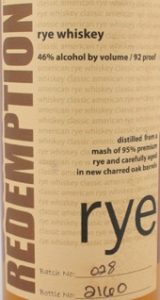
First up is Hudson Manhattan Rye from the Tuthilltown Distillery in New York State, bottled at 46% abv. They were the first licensed distillery to open in New York since prohibition, and as a small family owned distillery they were faced with the daunting task of deciding how to introduce their products to the market relatively quickly in order to draw an income. In order to release a fairly young, yet mature tasting product, they decided to use small barrels that would help to speed the aging process.
The Manhattan Rye is not by any means an inexpensive product, but as an introduction to the new style of Rye being produced by small distillers it is well worth a taste. On the nose it is sweet, with toasted rye bread notes as well as a hint of dry wood. You can definitely smell the grain in this one, and this is reflected in the taste where honey sweetness fights with slightly bitter and dry notes of charred grains, before giving way to a more balanced finish of warm rye bread with hints of vanilla and cinnamon. This is a fairly full flavoured Whiskey, with plenty of character to it, but to me it lacks the balance you find in some more slowly matured products.
The Hudson Manhattan Rye is not by any means unpleasant, in fact it’s an intriguing dram, but to my mind it still tastes like a young spirit masquerading as a more mature product than it really is. That being said, when it comes to mixing it in a cocktail, the fact that it is still a lively spirit with strong, clearly defined flavours, seems to play to its advantage. In a Remember the Maine it shines as the star of the drink, with the sweetness of Cherry Heering adding a fruit note that balances the dry Rye flavours beautifully.
REMEMBER THE MAINE
- 60ml Hudson Manhattan Rye Whiskey
- 15ml Antica Formula Vermouth
- 10ml Cherry Heering
- 2 dashes Angostura bitters
Stir all ingredients with ice and strain into a chilled absinthe rinsed coupe before finishing it off with a lemon twist.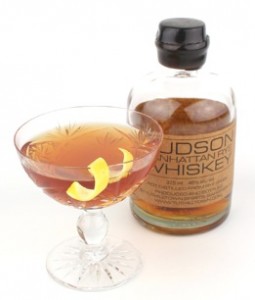
While Hudson is an interesting rye, it seems to me to be a very expensive product for a young Whiskey, so it will be interesting to see how it stands the test of time as less expensive competitors come to the market.
Next up from the drinks cabinet is Templeton Rye, a ‘prohibition style rye’ based on the illegally produced Whiskey made in the town of Templeton Iowa in that era. There’s a great story behind this product that should help it when it comes to marketing, but what I really care about is the liquid not the story.
Templeton is more fruity on the nose with strong aromas of white fruits such as pear and red apple, the grain notes and sweetness come underneath the fruit, and there is a bit of harshness on the nose. This Whiskey smells young and feisty, which is not always a bad thing, so upon tasting it’s not surprising to find it fairly lively on the tongue for a spirit bottled at a low 40% abv. To my mind the alcohol dominates and it’s not until this dies away that you get the flavours you might expect from a rye, there’s toast, walnut skins, a subtle hint of aniseed, cinnamon and just a touch of sweetness.
They age Templeton for a minimum of four years and blend it in small batches of between 15 and 20 barrels, before bottling and labelling by hand. This still feels like a lively and relatively young spirit, but the finish on it is pleasant and once again it calls out for mixing, so with that in mind I present the Brown Cocktail adapted from Jaques Sraub’s 1914 classic cocktail book, Drinks. I’ve added just a tiny touch of gomme as the sweetness seems to bring balance to the drink, but the original didn’t call for any.
BROWN COCKTAIL
- 50ml Templeton Rye
- 25ml London Dry Gin
- 2 dashes (a scant barspoon at most) gomme
- 2 dashes Bitter Truth orange bitters
Stir the three ingredients with plenty of ice before straining into a chilled cocktail glass. The original makes no mention of a garnish, but I like it with a small orange twist to draw out some of the sweeter notes.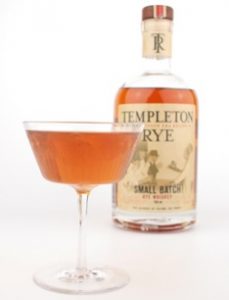
This austere and simple cocktail seems to really benefit from this lighter more lively style of Rye Whiskey and shows off the underlying flavours balancing them against the herbal qualities of the gin. I prefer Plymouth with this as a heavier, more juniper led gin can overpower the rye.
The last of the ‘new’ ryes we have for you today is Redemption, distilled from 95% rye and bottled at 46% abv. This Rye is produced in Indiana, and while I haven’t had it confirmed it seems likely that this comes from one of the distilleries that produce high rye content whiskies for export to Canada for them to flavour their domestic whiskies with. This is a process that was common after prohibition, when Seagram’s owned many distilleries in both the US and Canada.
The Whiskey is provided by the distillery in Indiana but bottled in Kentucky under the brand name Redemption. The Whiskey is aged for a minimum of four years in 55 gallon barrels, as is usual in most bourbon production. While it is marketed as a ‘feisty spirit’ or a ‘fun, young, American Spirit’ actually of all three products this one seems to strike the best balance. It’s also retailed at a reasonable price in the states, which I hope will help it to find a widespread following.
On the nose there is a hint of burned sugar, maple and toasted grains. You can also pick up hints of wood shavings and underneath a gentle touch of fruit. It’s almost citrus fresh in its lightness, but there is enough complexity to make you intrigued enough to take the first sip. The flavour delivers a good balance between sweetness and the dry notes you expect from a Rye, there are hints of spice, with nutmeg and cinnamon leading the way, over dry orange peel, as this fades you are left with dry bready notes with just a hint of nuttiness and a soft lingering sweetness that balances the dry grain.
This Rye made me want to turn out yet another classic style drink, so inspired by the Liberal Cocktail in Modern American Drinks by George Kappeler, I reached for Picon Bier to play on the orange notes I had tasted in Redemption.
THE COALITION COCKTAIL
- 60ml Redemption Rye
- 20ml Picon Bier
- barspoon gomme
- 2 dashes Bitter Truth JT bitters
Stir all ingredients with ice and strain into a chilled cocktail glass or coupe and garnish with a small orange twist.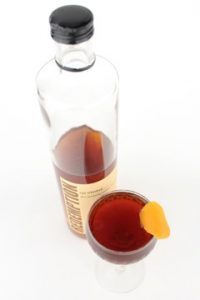
I think it’s interesting to see these new Whiskies coming to the market, but it feels like this is just the beginning of the story. Rye is definitely experiencing a rebirth, and with demand at an all time high for this once popular spirit I’m sure Rye is here to stay. It will be interesting to see what developments happen in the US with this fantastic spirit, but one thing seems certain, there will be plenty of new brands to try over the next few years. I just hope they produce enough for us to have some over on this side of the pond too!
This article was first published on Bitters & Twisted on November 22nd 2011


